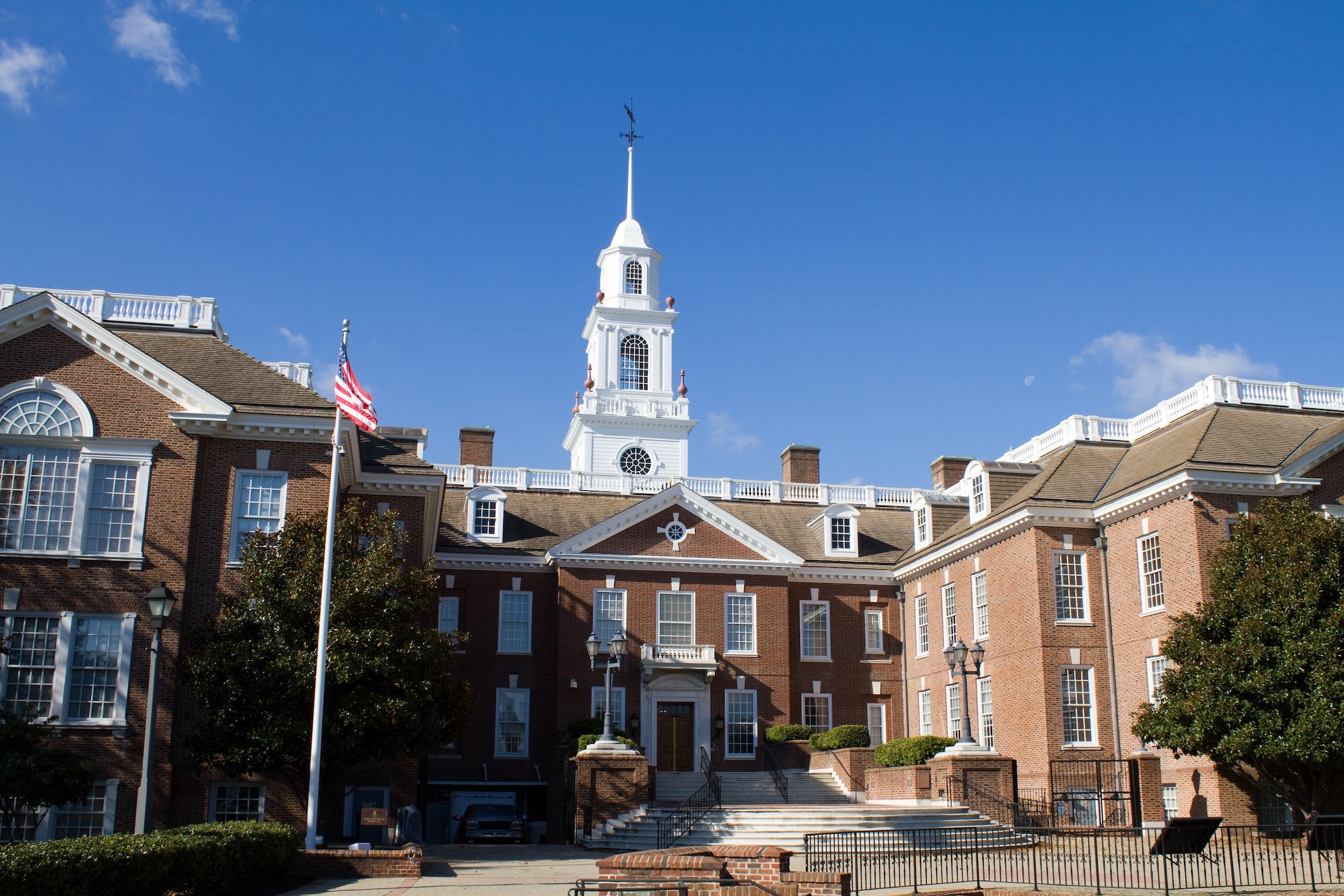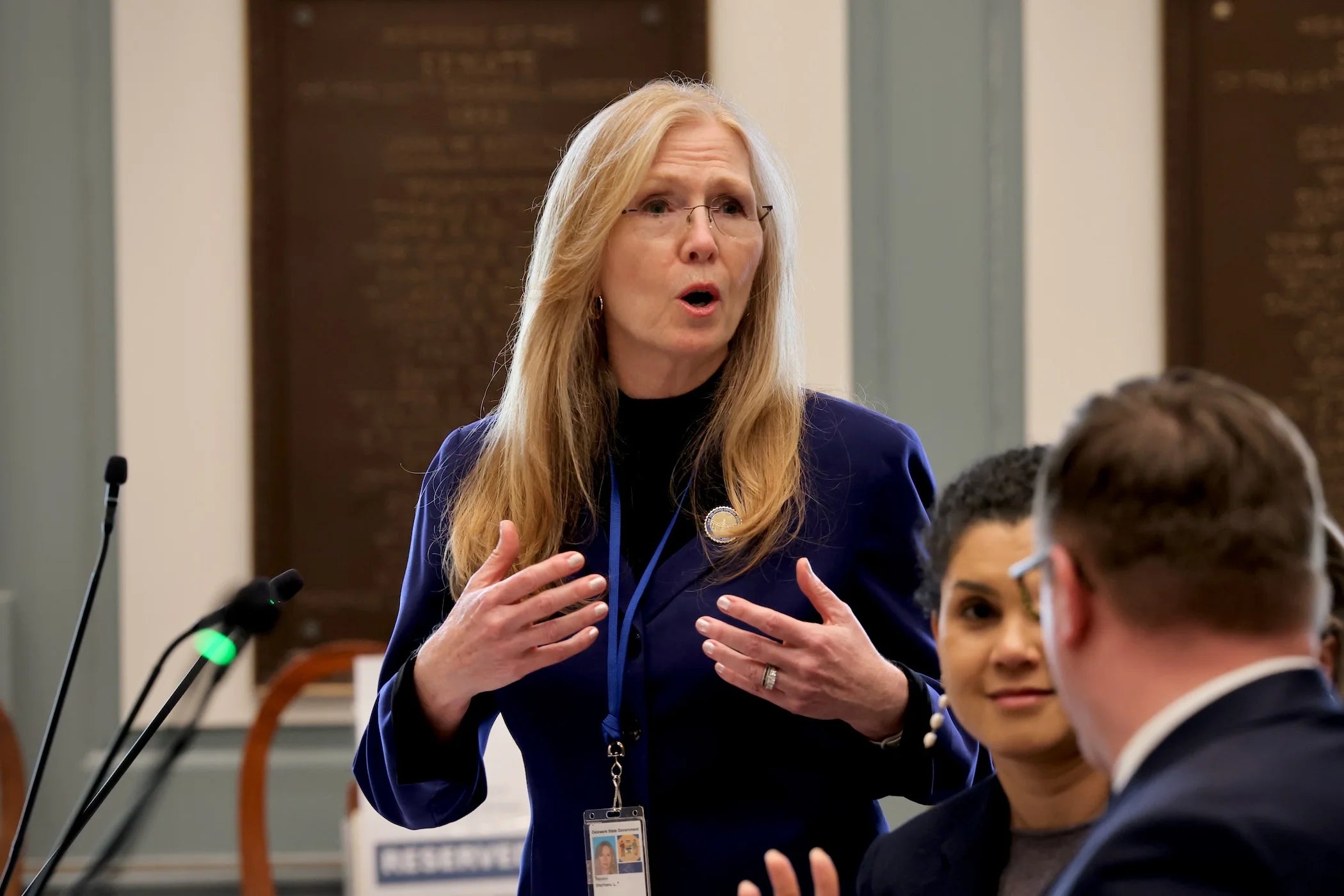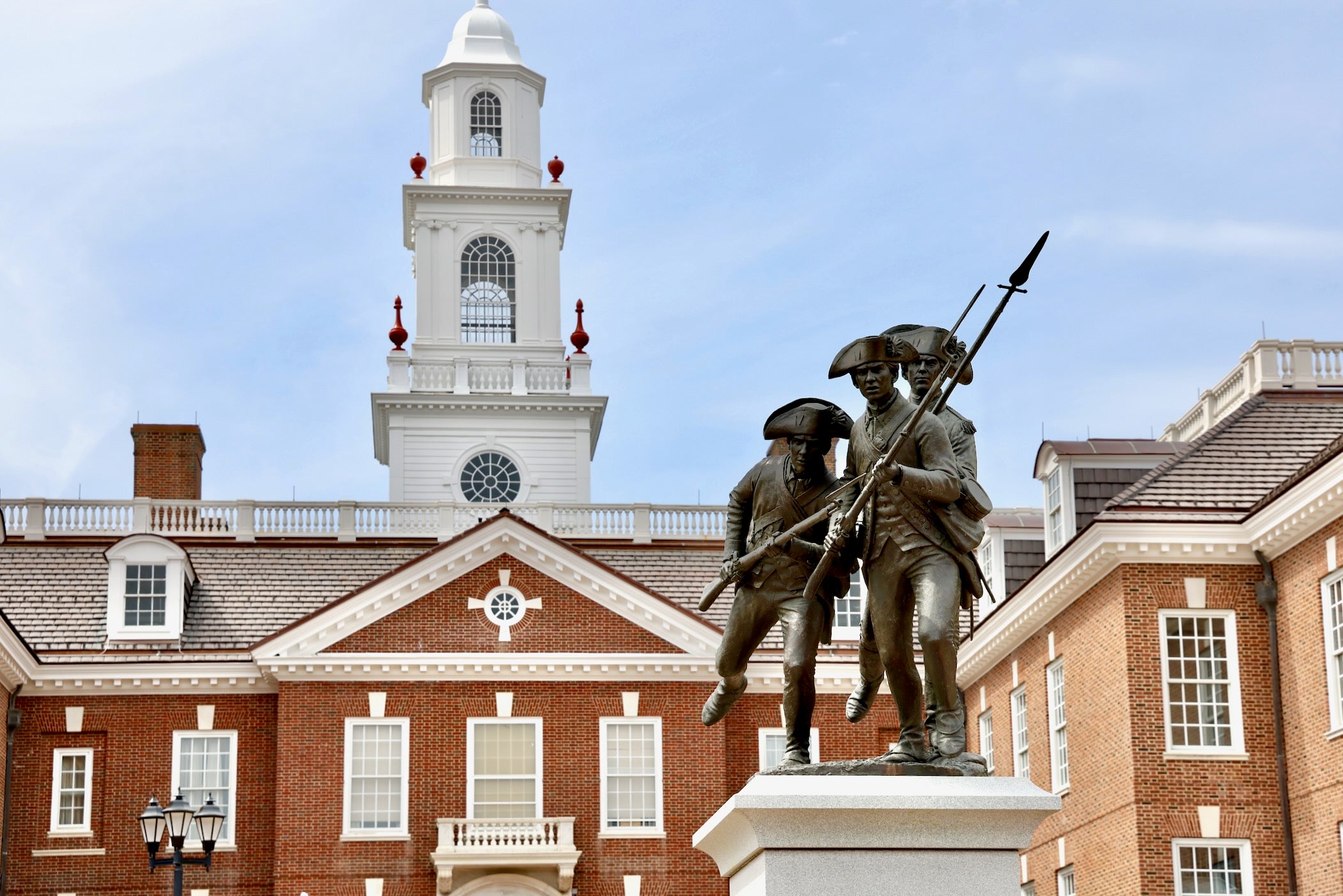Delaware
Del Gov. Matt Meyer proposes raising taxes, fees in budget ‘reset’ speech

The governor’s recommended budget includes $937 million for capital improvements, $255 million for transportation projects, $83 million in Grant-In-Aid funding and a $60 million supplemental bill. It calls for investments in areas like housing, education and healthcare.
Meyer is calling for emergency funding for school districts and charters with large numbers of students who are failing to read at a proficient level. He declared a “literacy emergency” in Delaware earlier this year after 8th-grade reading scores dropped to a 27-year low. He is also proposing investing $3 million directly into classrooms while also raising $3 million from private donors to put into the effort as a pilot program.
His proposal also calls for a $12 million increase for affordable housing initiatives, including $6 million for state rental assistance. The plan includes reducing homelessness and streamlining the process for constructing affordable housing.
“I like to say the rent is still too damn high,” Meyer said. “There are 50,000 Delawareans that are rent burdened, meaning they pay more than 30% of their income for housing.”
Meyer’s budget spends $85.5 million on Medicaid and sets aside about $22 million to offset potential federal spending cuts. Delaware and other states have seen federal funding freezes since President Donald Trump has taken office, and the members of the state’s congressional delegation say Republicans plan to cut Medicaid spending.
State Rep. Jeffrey Spiegelman, R-Clayton, said he was concerned that creating the new tax brackets would hurt small businesses at a time when the state was facing economic strain.
“I appreciate the governor mentioning that we want to do all of these things for small businesses,” he said. “We want to get regulation out of the way. We want to take a look at some of these land deserts, these properties that can be developed a little easier, make them shovel-ready. And all these things are great. But at the same time, we’re also turning around saying, ‘Hey, small (and) medium manufacturing firms, we’re going to tax you more to pay for these other things.’”
House Minority Leader Tim Dukes, R-Laurel, said there were things about Meyer’s recommended budget he liked, such as money going into classrooms, using Artificial Intelligence as an educational tool, and housing initiatives.
“The question I think that we’re all left with is, how do you pay for it all?” he asked. “That’s where we’re going to have to kind of go back to the drawing board and figure out what our true initiatives are and what we want to get accomplished here in this fiscal year as we’re laying out the budget for 2026.”

Delaware
Save the embarrassment. These expungement clinics may help with clearing a Delaware record
Speed enforcement camera now active near Lewes
It’s located at Pondview Drive on southbound Coastal Highway.
A criminal history, even one stemming from a juvenile arrest or a minor driving violation, can be a lifelong barrier to opportunity for many Delawareans. Whether or not a conviction occurred, a record can follow a person for years, showing up in background checks run by employers, landlords and loan officers.
An expungement offers a way to break that cycle. The legal process removes police and court records from public databases, allowing former defendants to move forward without being required to disclose past arrests or charges.
To help people navigate that process, several Delaware lawmakers and state agencies are hosting free expungement clinics this fall, offering one-on-one legal counseling to help eligible residents clear their records and reclaim new opportunities.
3 events planned across Delaware
Before the year ends, Delaware residents will have three opportunities to attend an expungement clinic where free, individual legal counseling will be available.
The events are organized in collaboration with the Office of Defense Services, the Delaware Criminal Justice Information System, or DELJIS, and the Delaware Department of Labor’s Advancement through Pardons and Expungement APEX Program. The Office of the Marijuana Commissioner has joined as a new sponsor this year and is contributing up to $5,000 to help cover expungement-related fees.
The sessions are open to individuals with Delaware criminal records. Services are offered on a first-come, first-served basis, and advance registration is required.
Where and how to attend
The Middletown Expungement Clinic will be held from 2 to 5 p.m. Oct. 29 at the Whitehall Recreational Center in Sen. Nicole Poore’s district. Registration is available at bit.ly/48gnKto.
The Smyrna Expungement Clinic will take place from 2 to 5 p.m. Nov. 6 at the Duck Creek Regional Library in Sen. Kyra Hoffner’s district. Registration is available at bit.ly/3KaHOn3.
In Sussex County, the Office of Defense Services will host the Life Church Expungement Clinic from 11 a.m. to 2 p.m. Nov. 18 at The Life Church in Laurel. Registration is available at forms.gle/bACj1h1xouk452oz8. For more information, contact Maria Clark at the Office of Defense Services at 302-688-4560.
Organizers say the goal of these clinics is to help Delaware residents overcome the lasting effects of old criminal records and move toward greater economic and personal stability. They said, by removing barriers to employment and housing, expungements can help people reenter the workforce, support their families and participate fully in their communities.
To share your community news and activities with our audience, join Delaware Voices Uplifted on Facebook. Nonprofits, community groups and service providers are welcome to submit their information to be added to our Community Resources Map. Contact staff reporter Anitra Johnson at ajohnson@delawareonline.com.
Delaware
Would adding nuclear power solve Delaware’s energy needs?

Nuclear energy is seeing something of a renaissance, helped in part by executive orders from President Donald Trump boosting the industry. The four orders include rapid development and deployment of advanced nuclear technologies, reconsidering radiation exposure standards, eliminating or expediting environmental reviews of applications and funding for workforce-related opportunities. Big tech companies are also betting big on nuclear energy to fuel power-hungry data centers.
Investment firm Starwood Digital Ventures is currently pitching a massive data center for Delaware City. Critics are concerned it will drain large amounts of energy and water.
Kathryn Lienhard, an offshore wind energy research associate with Delaware Sea Grant, said nuclear power generates electricity through chain reactions that produce heat. That heat is used to make steam that spins a turbine to create the electricity. Reactors use uranium, which is radioactive, for nuclear fuel, and exposure can cause lung cancer and other diseases. Spent reactor fuel is a highly radioactive byproduct that is normally stored on site, but Lienhard said the U.S. has yet to develop a long-term storage solution for the waste.
Public anxiety about the harmful health effects of nuclear power plants grew after the worst commercial reactor accident in U.S. history at the Three Mile Island plant in 1979. The partial core meltdown at the plant near Middletown, Pennsylvania, forced the evacuation of thousands of nearby residents. Numerous studies since then found no direct negative health effects on the nearby population. Microsoft is reopening the plant to power its data centers.
Union boilermaker Martin Willis, another task force member, said members should look at deploying a small nuclear reactor at the Dover Air Force Base. He also said the public is still resistant to adopting nuclear energy.
“I hate to say it, but even with America being in an electric generation crisis because of the demands of AI data centers, Bitcoin mining, cannabis farming and a robust economy, our nation will not embrace civilian nuclear power until parts of America suffer widespread blackouts and rolling brownouts,” he said.
The task force’s next meeting is Dec. 1. The group’s chair, state Sen. Stephanie Hansen, said the group will deliver a final report, but that date is yet to be determined.
Delaware
Progressive leader and Newark’s longtime representative John Kowalko dies at 80

Bill that establishes Office of Inspector General in Delaware signed into law
Gov. Matt Meyer signed Senate Bill 4 into Thursday. It establishes Office of Inspector General within state government. 8/14/25
Former state Rep. John Kowalko, an unapologetic voice for Delaware’s progressive movement and a longtime advocate for government transparency, died Oct. 25 at the age 80.
Kowalko, sometimes called the “Bernie Sanders of Delaware,” represented Newark’s 25th District — home to the University of Delaware — from 2006 until his retirement in 2022. Known for his blunt style and fierce defense of the poor and working class, Kowalko was the most outspoken progressive in the 41-member House, long before the rise of the newer progressive wave that followed the 2020 elections.
During his tenure, he was a tireless champion of public education and open government. As a member of the Delaware Coalition for Open Government, Kowalko pressed officials for transparency and accountability, notably seeking answers about embezzlement issues within the state’s unemployment insurance trust fund.
Even after retiring, Kowalko continued his activism. He co-founded Retirees Investing in Social Equity (RISE) Delaware, which helped block the introduction of Medicare Advantage into the state employees’ retirement health plan. Earlier this year, he celebrated a personal milestone when the long-sought Inspector General bill, an initiative he had championed for two decades, was signed into law by Gov. Matt Meyer.
In a joint statement, Senate President Pro Tempore Dave Sokola, Senate Majority Leader Bryan Townsend, and Senate Majority Whip Elizabeth “Tizzy” Lockman praised Kowalko’s decades of service and dedication to Delaware’s working families. They said Kowalko consistently fought for progressive priorities with conviction and compassion, earning deep respect among colleagues and constituents alike.
The Senate leaders added that Kowalko’s unwavering commitment to open government helped shape a culture of greater transparency in Dover.
To share your community news and activities with our audience, join Delaware Voices Uplifted on Facebook. Nonprofits, community groups and service providers are welcome to submit their information to be added to our Community Resources Map. Contact staff reporter Anitra Johnson at ajohnson@delawareonline.com.
-

 New York5 days ago
New York5 days agoVideo: How Mamdani Has Evolved in the Mayoral Race
-

 World1 week ago
World1 week agoIsrael continues deadly Gaza truce breaches as US seeks to strengthen deal
-

 News1 week ago
News1 week agoVideo: Federal Agents Detain Man During New York City Raid
-

 News1 week ago
News1 week agoBooks about race and gender to be returned to school libraries on some military bases
-

 Technology1 week ago
Technology1 week agoAI girlfriend apps leak millions of private chats
-

 Politics1 week ago
Politics1 week agoTrump admin on pace to shatter deportation record by end of first year: ‘Just the beginning’
-

 Business1 week ago
Business1 week agoUnionized baristas want Olympics to drop Starbucks as its ‘official coffee partner’
-

 News1 week ago
News1 week agoTrump news at a glance: president can send national guard to Portland, for now

















